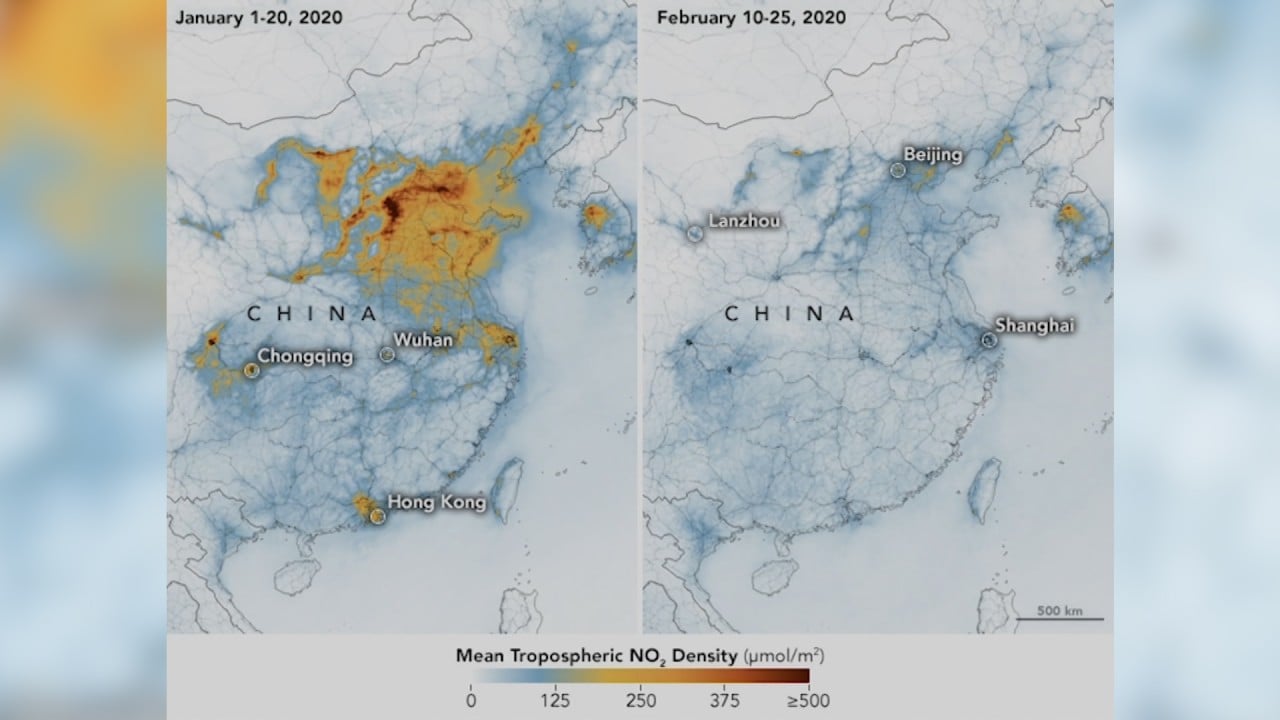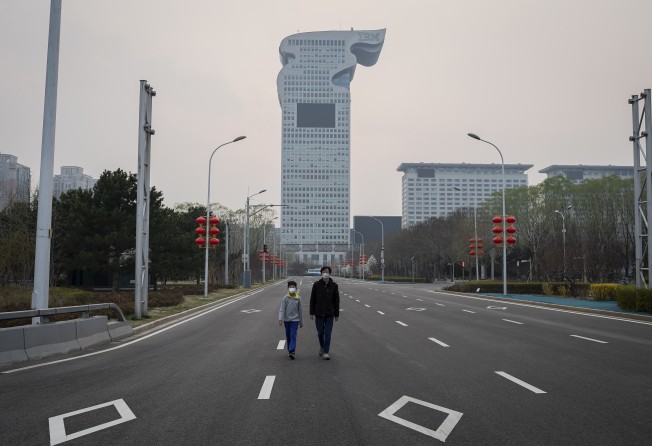
03:31
Coronavirus: blue skies over Chinese cities as Covid-19 lockdown temporarily cuts air pollution

The coronavirus lockdown might have upended the mix of chemicals in the atmosphere and led to unexpected air pollution in the Chinese capital, according to a new study.
The Chinese government imposed strict lockdowns across the country early this year after an outbreak of a new coronavirus erupted in Wuhan, in the central province of Hubei.
Most factories were shut down, shopping malls were closed and people were told to stay at home for more than two months. The number of cars on the road dropped from between 60 to nearly 90 per cent across the country, according to various estimates.
Professor Sun Yele and colleagues with the Institute of Atmospheric Physics at the Chinese Academy of Sciences in Beijing found that the decline in traffic and other human activities led to an overall decline in pollutant emissions for winter of about 40 per cent.
But readings of PM2.5, very fine suspended particles that are hazardous to human health, were about the same as last year, according to the Beijing Municipal Ecology and Environment Bureau.
“In particular, two severe haze episodes occurred ... when the emissions were expected to be the lowest compared with the same periods in previous years,” Sun and colleagues said in a peer-reviewed-paper published online in the journal Science of the Total Environment on Saturday.

03:31
Coronavirus: blue skies over Chinese cities as Covid-19 lockdown temporarily cuts air pollution
The researchers found that there were lower levels of every major air pollutant in Beijing during the pandemic lockdown – except for ozone, which increased.
Ozone is highly reactive and can turn otherwise harmless compounds into haze-making particles, according to the researchers.
More often the ozone reacts with nitrogen dioxide from car exhaust, forming a mostly harmless chemical. But with fewer cars pumping out fumes, there was less nitrogen dioxide to bind to.
And this could have been the reason for the haze during the pandemic.
But the process remains unclear, and there is “an urgent need for a better understanding of the chemical interactions”, according to the paper.
The increase in ozone was not limited in Beijing. An earlier study led by environment professor He Kebin with Tsinghua University detected a doubling in ozone levels across eastern China in the lockdown period. Ozone levels are usually higher in summer, and the researchers attributed the unusual rise in the compound to the countrywide lockdown.
The “sudden and precipitous reduction” in car exhaust “could cause a substantial increase of ozone”, He said in a non-peer-reviewed paper posted in EarthArXiv.org, a preprint service for Earth sciences.

01:25
China’s industrial heartland ‘sacrificed’ in war on pollution
Big cities in China have imposed some of the world’s toughest restrictions on vehicles to curb urban pollution. For example Beijing issues licence plates through a lottery system, with one issued for about every 2,000 applicants. Critics have questioned the effectiveness of these policies.
The source of the ozone is still being debated. Previous studies suggested that it could result from the sunlight energising volatile organic compounds (VOCs), which then interact with other chemicals in the air. The VOC itself could come from kitchen emissions, paint, hairsprays or from forest plants.
A scientist involved in the air pollution control programme of the Beijing municipal government said that ozone had been one of their top research priorities in recent years. Monitoring stations across the city were collecting data to trace the possible sources, the scientist said, declining to be named. The hope was to establish an early warning system to cut off a suspect source before the pollution happened.
“We don’t have a viable option on the table yet,” he said. “We can’t really blame the trees, can we?”